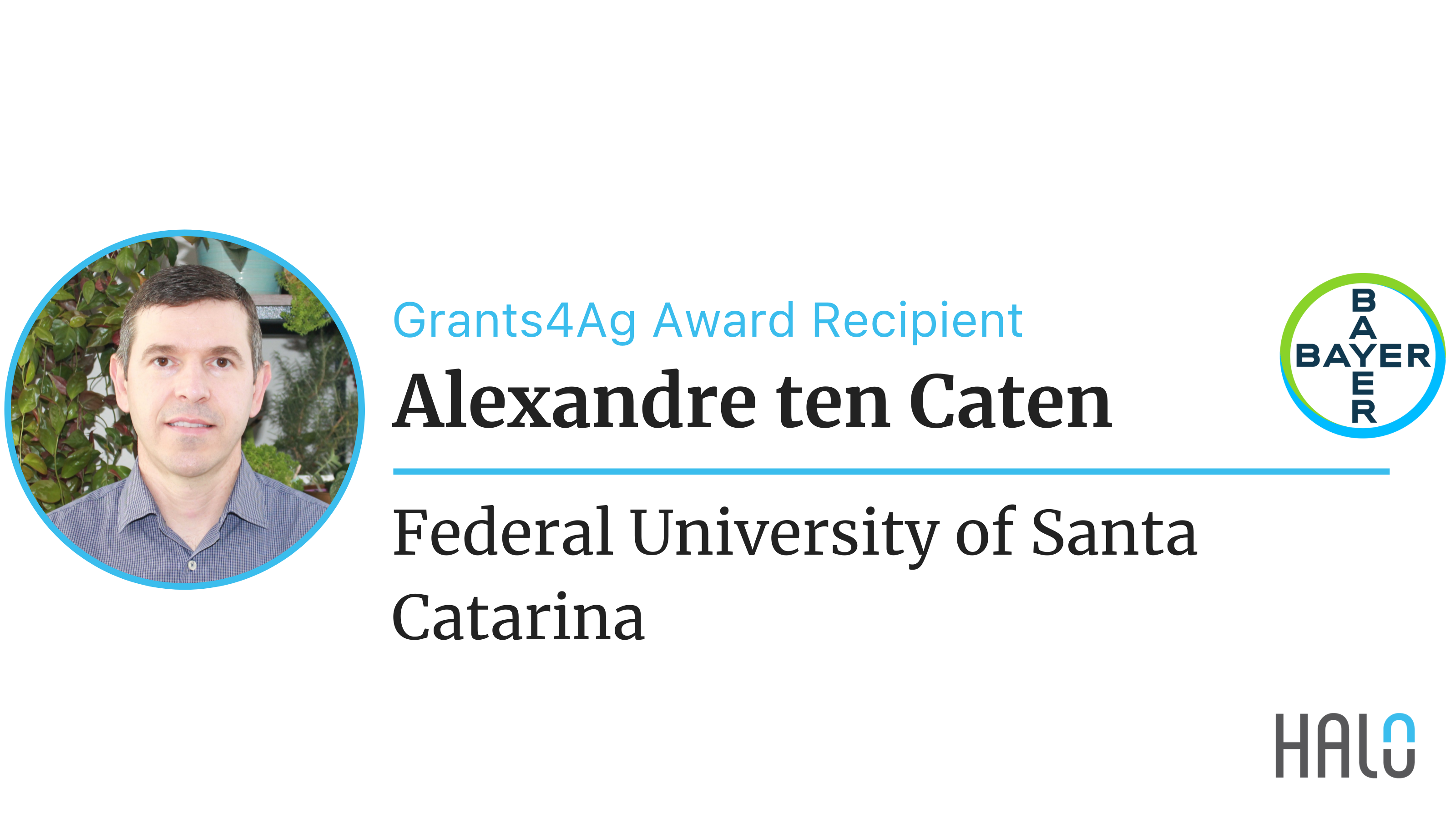Proximal Soil Sensing is another tool in the precision agriculture arsenal. Prof. Alexandre ten Caten is researching its use in conjunction with machine learning as a cost-effective and environmentally-friendly method to assess soils. View Halo Profile >>
Tell us about your research.
Collecting soil data using Proximal Soil Sensing (PSS) produces a large amount of information suited to Machine Learning (ML) statistical approaches. In recent years, researchers around the world have proposed new PSS protocols for data handling, preprocessing, and modelling. But real-life implementations of ML deployment workflows remain to be established. Most researchers look into ML implementations evaluating testing and validation possibilities, without going beyond that into a predictive platform to be applied in newly arriving samples such as those not seen in the ML model creation phase. My goal is to investigate a deployment pipeline for ML using memory-based learning between the incoming-spectra and within model existing-spectra.
Proximal Soil Sensing techniques using light, like visible and near infrared, are gaining ground as fast, cost-effective, and environmental-friendly opportunities to assess organic carbon and clay content of soil.
Can you explain that to a non-scientist?
Worldwide soils are under threat of increasing demand for food, fiber, and fuel. In fact, millions of hectares, around the globe, are already degraded accordingly to the Food and Agriculture Organization of the United Nations. To be able to properly use this natural resource to its highest potential, or to restore its role in ecosystems, we need to carry out soil testing. Paradoxically, every time that a soil sample is tested, harmful wastes like potassium dichromate and sulfuric acid are produced. In recent years, Proximal Soil Sensing techniques using light, like visible and near infrared, are gaining ground as fast, cost-effective, and environmental-friendly opportunities to assess organic carbon and clay content of soil.
Why did you choose this area of research?
I have been working with pedometrics since my PhD, for more than 10 years now. Pedometrics is quite a new area of soil science research, and it is a data-driven approach for creating soil property maps applying a myriad of sensors for data collection. The digitalization of agriculture, the increasing number of farms using precision farming, and the growing availability of remote sensing satellites have set the stage for a spreading awareness regarding pedometric products. In this scenario, Proximal Soil Sensing allows us to evaluate the potential of different photon-based methods such as visible and near infrared spectroscopy and X-ray fluorescence for collecting data to deepen our knowledge of this fragile and extremely important natural resource.
Proximal Soil Sensing will allow us to overcome the limitations imposed by soil coverage in remote sensing due to vegetation and plant residues in no-till and regenerative agriculture.
How could your Grants4Ag project someday impact #healthforall #hungerfornone?
Proximal Soil Sensing will allow us to overcome the limitations imposed by soil coverage in remote sensing due to vegetation and plant residues in no-till and regenerative agriculture. Spectral data can provide cost-effective and environmentally-friendly solutions to an increasing demand for soil information. This #Grants4Ag project will allow me to contribute to healthy soils and directly impact the Sustainable Development Goals (SDGs), like the proper provision of food, fiber, and fuel with relation to the SDG #1 No Poverty and #2 Zero Hunger, in addition to climate regulation and SDG #13 Climate Action and #15 Life and Land. Additionally, Bayer’s Grants4Ag program represents an opportunity for capacity building in our country.


